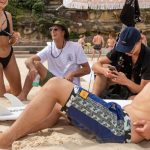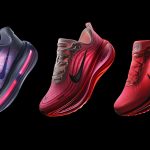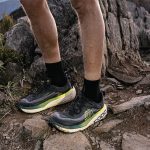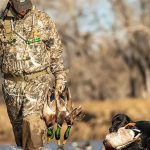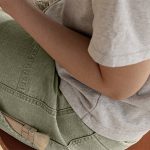Overall sales for the entire winter sport market, including specialty and chain stores, were up 13% in dollars to $1.5 billion for the August through December period of 2005, compared to $1.3 billion reported last year, according to the SnowSports Industries America (SIA) Retail Audit. Unit sales were up 14%. Sales at specialty ski and snowboard shops were up 12% in dollars compared to last season. In dollars, that translates to $1.2 billion in sales compared to $1.0 billion in 2004. Unit sales were up from last season 13%.
“Consumer confidence surged in December to its highest level since August due in part to economic strength, falling gas prices and job growth. Specialty stores benefited from this lift as consumers purchased apparel and accessories during the holiday season, contributing to dollar sales increases of 14% and 15%, respectively, over last season,” said Christine Martinez, market research manager for SIA, the not-for-profit industry trade group that represents manufacturers and distributors of snow sports products. The SIA Retail Audit tracks and reports sales in all snow sports product categories. This is the third report of six that look at sales through March 31, 2006, the end of the winter season.
Continuing their strong start this season, specialty apparel sales (including tops, bottoms, suits and snowboard) are ahead 14% in dollars as compared to the same August through December period last year. By the end of December, apparel sales totaled $375.9 million. December sales accounted for 52% of all apparel dollars sold this season-to-date.
Insulated parka sales rose 15% in dollars this season over last with sales reaching $97.4 million by the end of December. Womens and junior insulated parkas, specifically, showed considerable dollar gains, each sub-category up 20% and 16%, respectively, over last period. Womens continue to lead the category with $46.0 million in sales. Through December, womens outsold mens 1.4 to 1. Juniors accounted for 19% of all insulated parka dollars sold this season.
Softshell parka sales continue to thrive in specialty and chain stores. Dollar sales jumped 45% when comparing this period to the same period a year ago, reaching $15.5 million in sales by the end of December. At the end of December, softshells were 53% sold-through.
As in the insulated parka category, the softshell parka category contributed their increase to womens and junior parkas. Womens and juniors demonstrated impressive dollar increases, 83% and 632%, respectively. Season-to-date, retailers sold over 3,500 junior softshell parka units, up from less than 300 in the same period last season.
Shell parkas continue to hold their own with a moderate 17% dollar gain over the same August through December period last year. Sales grew to $38.2 million by the end of December. Junior shell parkas are gaining in popularity, up 37% in dollar sales over last season.
Vests (no fleece) and fleece (includes vests) continue to generate the increase in sales which began last season. Dollar sales were up for both categories, 42% and 14%, respectively, over last season. This is the second year of double digit growth for vests for the August to December period.
Apparel bottoms increased 13% in dollars over the same period last year with junior bottoms contributing an impressive dollar gain of 34%. Insulated waist pants, accounting for 34% of all alpine bottom dollars this season (up from 28% last season), leapt 40% in dollars. Shell pants accounted for 22% of all bottom dollars sold this season and increased 15% in dollars over last season. Apparel suits did not fare so well, dipping 30% in dollars. Junior suits, on the other hand, performed better, up 8% in dollars as compared to last season.
Snowboard apparel sales grew 19% in dollars totaling $64.2 million in sales by the end of December. Snowboard tops and snowboard bottoms are showing promise this period over last, up 23% and 26%, respectively. At the end of December, all snowboard apparel was 52% sold-through.
Mens snowboard tops and bottoms are leading the category with $21.1 million and $16.3 million in sales thus far. The fact that mens snowboard tops outsold womens nearly 2 to 1 proves there is tremendous room for growth in womens snowboard tops. In dollars, mens bottoms increased 32% and womens 21%.
After a weak start last year, junior snowboard apparel is slowly recovering. Junior snowboard top and snowboard bottom dollars increased 9% and 4% over last season, respectively.
The accessories category in specialty stores also grew from this period over last, up 15% in dollars and reaching $356.8 million by the end of December. The apparel accessories category increased sales 14% over the same period last year, totaling $197.0 million by the end of this period. Winter boots (up 19%), gloves (up 28%), mitts (up 26%), and neck gaiters (up 27%) contributed to this dollar increase.
Equipment accessories increased 17% with dollar gains from goggles (up 21%), sunglasses (up 35%), snowshoes (up 27%), helmets (up 21%), technical day packs (up 26%), luggage (up 16%), wax (up 22%) and snowboard accessories (up 26%).
From August through December 2005, snowboard equipment sales (including snowboards, boots and bindings) were up 12% in dollars with sales totaling $150.8 million. Snowboards (up 12% to $70.4 million), boots (up 11% to $42.7 million) and bindings (up 14% to $37.8 million) all experienced dollar increases this season over last.
At the end of December, specialty retailers had 19% fewer snowboards in stock than they did at the end of December 2004. In total, snowboards were 55% sold-through. Freestyle boards, accounting for 48% of all board dollars sold so far this season (up from 41% last season) performed well with a dollar increase of 30%.
Freeride boards, 40% of all board dollars sold, saw dollar sales increase 15% and sales totaling $28.5 million by the end of December. All mountain boards, 10% of all units sold this season, declined 16% in dollar sales with $5.3 million in sales by the end of December 2005. Carryover unit sales plunged 54% reaching $2.5 million in sales by the end of December. Season-to-date carryover boards accounted for just 5% of all boards sold, down from 12% in the same period last season.
Step-in boots and bindings continued their decline this season, each with 57% declines in dollar sales over last season.
Overall equipment sales (alpine, snowboard, Nordic, Telemark and Randonee/AT) were up 8% in dollars as compared to last season with sales totaling $421.4 million from August through December 2005. In specialty stores, alpine ski equipment (including skis, ski systems, boots, bindings and poles) grew 6% in dollars this season over last.
Integrated system sales continue to escalate totaling $60.7 million through the end of December, anincrease of 32% in dollars when comparing this period to the same period a year ago. At the end of December, retailers had 20% more integrated systems in their inventories than they did at the end of December 2004. At the end of this December, they were 47% sold-through, 2 points ahead of last year at this time.
Add integrated systems to alpine skis and total unit sales increased 3%. Alpine skis, excluding integrated systems, fell 9% in dollars over last season, ending December with $59.5 million in sales. End-December inventory stood at 226,000 units, 61,000 fewer units than at the end of December 2004 — a 21% decline. At the end of December, all bindingless skis were 49% sold-through.
Through December, the ratio of flat skis to integrated systems fell to below 2 to 1 (1.7); compare that to the 2.5 to 1 ratio for the same period last season-to-date. Out of the 127,000 integrated systems sold season-to-date, 49% were of the carve variety and 41% were midfats.
Twintip ski sales continue to impress, up 66% in dollars and reaching $6.6 million in sales by the end of this period. End-December inventories were 58% greater than they were last December and the category was still 47% sold-through. Fat alpine skis continue to sell with an increase of 42% in dollars over last season. Though still a small category, super fat skis leapt 165% in dollars.
Carve skis, 17% of all skis sold, arestarting the season off slower than last, down 22% in dollar sales. Midfat alpine skis, 25% of all alpine ski dollars sold this season, down from 32% of all dollars last season-to-date, fell 28% in dollars when compared to the same August through December period in 2004.
Junior ski equipment may be making a comeback. Junior systems, 8% of all system units sold (up from 4% last season) jumped 165% in dollars. Junior skis, excluding systems, are up 28% in dollars over last season. End-December inventories stood at 60,000 units, down from 68,000 units at the end of December 2004. Added together, both junior integrated systems and skis were 57% sold-through at the end of December.
All ski carryover sales decreased a healthy 31% in dollars. End-December carryover ski inventory stood at just 23,000 units, a 57% decline over the same time last year. Carryover skis accounted for just 6% of all inventory ski units this end-December.
From August through December 2005, total alpine boot sales had increased 9% in dollars ($99.4 million in sales). Through December, 412,000 pairs of alpine boots were sold — 65,000 more units than all integrated systems and alpine skis combined.
Alpine boots aimed at intermediates grew the fastest. Dollars increased for high performance boots (up 7%), sport performance boots, (up 20%) and recreation boots (up 30%). Carryover boot sales fell 19% in dollars and accounted for 6% of all boot units sold, down from 10% for the same period in the 04/05 season. Junior boots are still going strong with dollars increasing 10% over last season. Through December, total units sold stood at 95,000 — nearly 4,000 more units than the combined number of junior skis and junior integrated systems sold.
The growth of integrated systems has clearly resulted in a decline in sales of stand-alone bindings. Stand-alone binding sales fell 14% in dollars, totaling $20.0 million at the end of December. At the end of December, 204,000 binding units sat in retail inventory, 24% fewer units than at the end of December 2004. Add stand-alone bindings to those attached to integrated systems and total binding sales increased 16% in dollars.
DIN 8-11 bindings, 38% of all binding units sold season-to-date (down from 45% last season) fell 28% in dollars. Higher-end performance DIN 12-14 bindings (20% of all units sold so far this season) were flat. Similar to junior skisales, junior alpine binding sales grew 13% in dollars. Through December, junior binding sales totaled approximately 73,000 units, only 8,000 units fewer than the number of junior skis sold in the same period.
The alpine pole category is up 19% in dollars over last season in part due to a 26% increase in adult poles (78% of all pole units sold this season).
After a slow start last season, the Nordic ski equipment category is showing an increase of 11% in dollars this season over last. Nordic skis (up 9% to $7.8 million), boots (up 11% to $6.6 million), bindings (up 7% to $2.6 million) and poles (up 31% to $1.8 million) all experienced dollar inclines.
Last seasons early snow in the West may be playing a factor in the slipping sales (dollars down 6%) of Telemark ski equipment. Sales of Telemark boots and bindings dropped in dollars4% and 19%, respectively. Telemark ski sales ended the August through December period up 2% with sales at $1.2 million.







